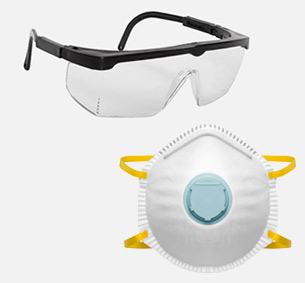
PPE Safety Tips & Tricks
In the construction industry, personal protective equipment (PPE) is considered the last line of defence when it comes to protecting workers from injuries on the job site.
Employers are required to implement engineering controls and other safety measures to guard against accidents and prevent injuries. In the event those measures fail or can’t be feasibly implemented, PPE is there to prevent an injury when hazards arise.
Head Protection
Hard hats protect workers from falling and flying objects to prevent striking head injuries.
They also insulate from electric shock. Because conditions on construction sites are constantly changing, a good rule of thumb is to require everyone on the job site to wear a hard hat at all times. Hard hats should be inspected for damage such as cracks and dents before each use. Damaged hard hats should be discarded and replaced.
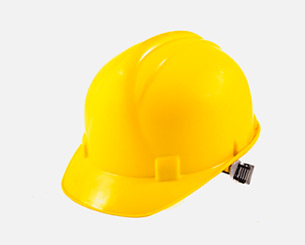
Hearing Protection
Hearing protection must be provided and used when noise levels or duration cannot be reduced to those specified in Table D-2 – Permissible Noise Exposures of OSHA standard number 1926.52
Acceptable hearing protection included earmuffs and earplugs which are to be fitted into the ear. Earplugs must be individually fitted by a competent person. Plain cotton is not an acceptable protective device according to OSHA.
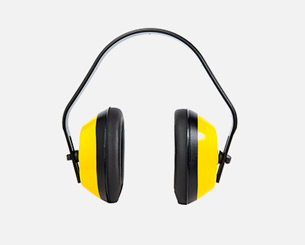
Hand Protection
Select the right glove for the job. The hand is the most commonly injured body part at the job site. Gloves should fit snugly and comfortably while still allowing for full dexterity of the fingers
You don’t want workers removing gloves because they don’t fit properly or because they can’t feel what they are doing when working with tools or equipment. There are gloves designed to protect against several hazards on the job site: gloves to protect against cuts and lacerations, welding gloves, heavy-duty rubber gloves for working with concrete, chemical-resistant gloves to protect against burns, and insulated gloves when performing electrical work.
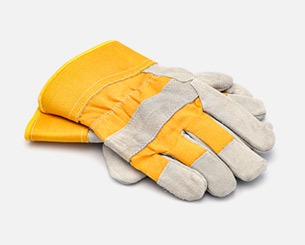
Foot Protection
When most people think of foot protection on the construction site, they think of steel or composite-toed boots. These protect workers from tools, materials, or equipment falling or dropping on the foot.
Composite-toed and steel-toed footwear both offer a high level of protection with steel-toed boots getting the slight edge. Composite-toed boots are lighter and don’t conduct heat which makes them preferable if you are working outside in extreme heat or cold temperatures. They also don’t conduct electricity which is good if you are doing electrical work or work around live wires. When selecting foot protection, you also want to choose slip-resistant footwear, to protect against slips and falls, and puncture-resistant soles, to protect against sharp objects like misplaced nails.
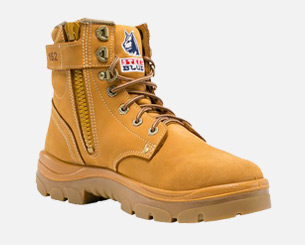
Eyes & Face Protection
Eye and face protection is needed when workers are exposed to hazards from flying particles, molten metal, liquid chemicals, acids, caustic liquids, chemical gases, vapours, and light radiation.
For workers who wear corrective lenses, prescriptions should be incorporated into the design of the eye protection or the eye protection should be designed to be worn over the prescription lenses. Face masks, safety goggles, and safety glasses should be selected based on the hazard they were designed to protect workers from. It should fit snugly and comfortably and not interfere with a worker’s movement. Protective eyewear should be durable, cleanable, and capable of being disinfected.
